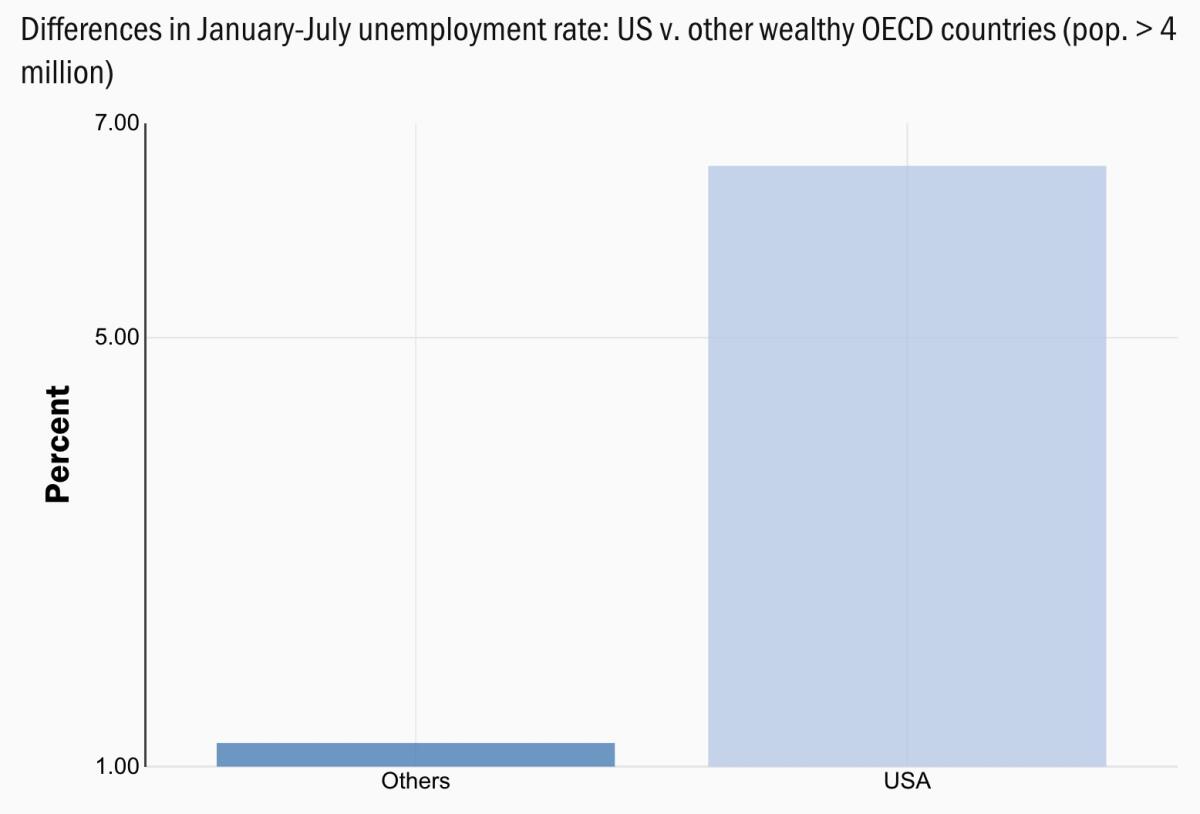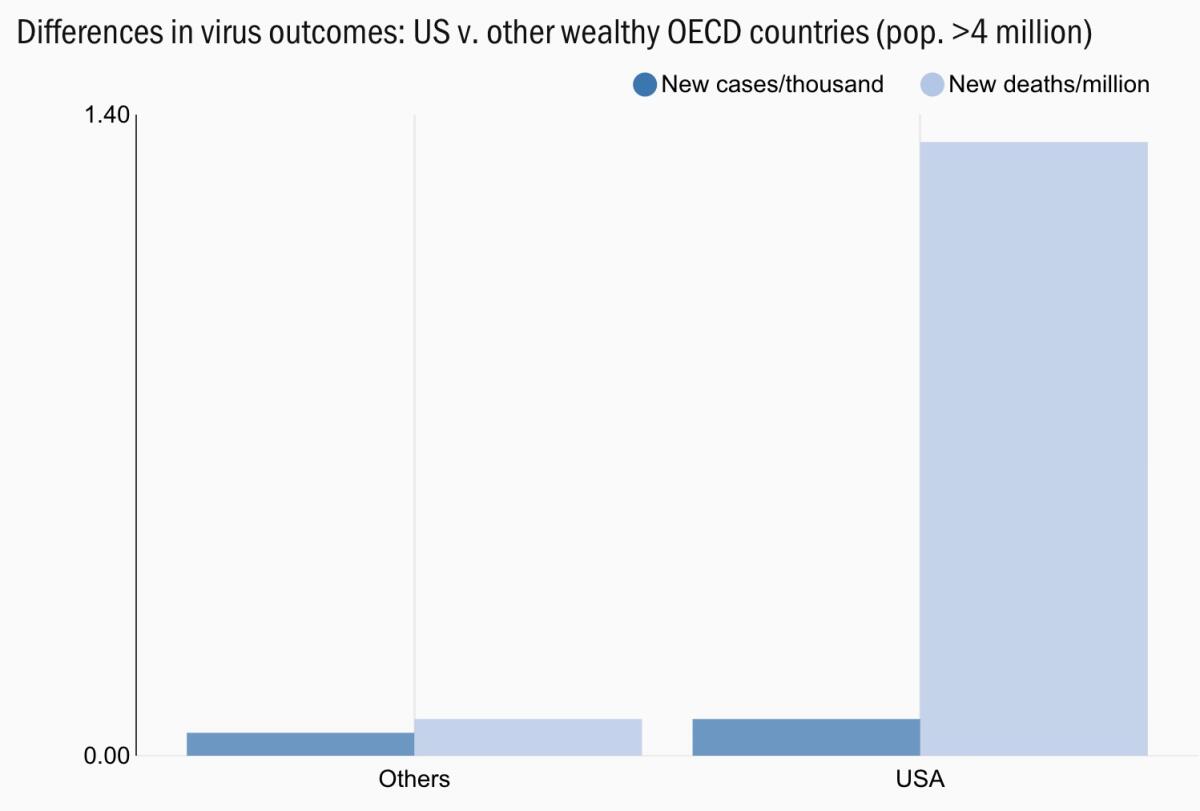How much worse off is America from COVID-19 than other rich nations? Much, much worse

- Share via
Mapping America’s response to the coronavirus pandemic compared with other countries hasn’t been a simple task, not least because of the densely obscuring smoke issuing from the Trump White House. But a new analysis points to an inescapable conclusion.
How much worse than other rich countries has the U.S. done in fighting COVID-19 and protecting its economy? Much, much worse. Incredibly worse.
The analysis comes from Harry J. Holzer, a professor of public policy at Georgetown University and a fellow at the Brookings Institution, which published his report on Wednesday and an earlier version in June.
It’s not like the virus is completely beyond our control. We did a bad job. It’s that simple.
— Harry J. Holzer, Georgetown public policy expert
Here’s Holzer’s bottom line: “Both employment and health outcomes for the U.S. during the pandemic have been worse than in almost any other high-income country in the world.”
Had the U.S. merely matched the average unemployment rate changes among the richest members of the Organization for Economic Cooperation and Development, or OECD, “at least 8.6 million more Americans would be employed today.” An equivalent record on COVID-19 deaths per capita would have resulted in the saving of 112,540 American lives.
About 13.6 million Americans were unemployed in August, according to the Bureau of Labor Statistics. About 190,000 people have died in the U.S. from COVID-19, according to the Johns Hopkins Coronavirus Resource Center.

Holzer doesn’t delve too deeply into the factors underlying this dismal record. He does observe, however, that “other countries have made much greater use of payroll subsidies that keep workers connected to their jobs.”
Among other factors, other countries took steps to ensure that workers were furloughed rather than unemployed, by directly subsidizing payrolls in ways that kept workers connected to their employers and reduced their risk of being permanently let go.
“Every month, we’re seeing that the fraction of American layoffs that are permanent is growing,” Holzer told me. In May, the University of Chicago projected that as many as 42%, or 11.6 million, of all job losses through April 25 due to the pandemic would become permanent.
In the U.S., Congress and the White House have allowed the Payroll Protection Program, which offered businesses loans that could be forgiven if they maintained employment, to expire. The program, Holzer notes, was not as widely exploited as employment protection arrangements in other countries. A $600-per-week federal unemployment benefit also expired at the end of July.
Trump’s record of cozying up to anti-vaccine advocates dates back more than a decade.
Accordingly, Holzer writes, “unemployment has become a much graver concern in the U.S. than it was last spring.”
The economic trendline is inextricable from America’s poor performance in the battle against the virus. “We waited too long, and when we finally acted, not enough was done in terms of ramping up testing and tracing,” Holzer says. “And then, Trump started pushing the states to pull the plug [on lockdowns] too early in May, and the caseload started to rise again in June.”
The harvest is that “the virus has now added to the economic woe.”
Holzer observes that the increase in the unemployment rate from January through April was 11 times larger in the U.S. than the average among other OECD countries. It remained five times higher than the non-U.S. average for January through July. A decline in the unemployment rate in August narrowed the gap but left the U.S. still far behind its wealthy cousins.
Not coincidentally, virus cases per capita in the U.S. are more than four times higher than the OECD average, and deaths per capita are twice as high.

Total cases per capita are higher in the U.S. than any other OECD country, Holzer writes, and total deaths per capita are higher than in all but four. Those countries are Sweden, which established a policy of deliberately allowing the virus to spread in a fruitless quest for “herd immunity”; Belgium; Britain; and Italy.
New deaths per capita, defined as the latest seven-day average, are higher in the U.S. than in any country other than Israel.
“Different policies definitely could have improved outcomes on both dimensions,” Holzer told me, referring to the economic and health metrics. “It’s not like the virus is completely beyond our control. We did a bad job. It’s that simple.”
More to Read
Inside the business of entertainment
The Wide Shot brings you news, analysis and insights on everything from streaming wars to production — and what it all means for the future.
You may occasionally receive promotional content from the Los Angeles Times.











